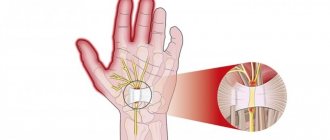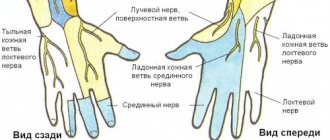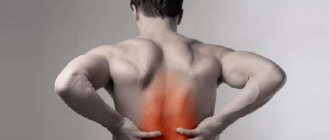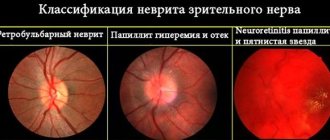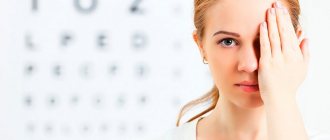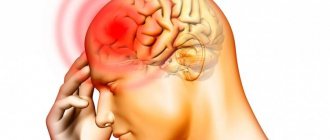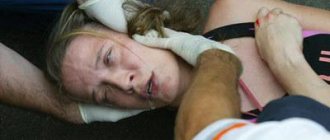Description of the disease
The causes and nature of the development of neuritis are determined by the functions of the hypoglossal nerve and its anatomy. This part of the central nervous system is formed by the fusion of the brain stem and spinal cord. The canal of the hypoglossal nerve is located in the occipital bone and, passing through the cranial cavity, sequentially runs:
- between the vagus nerve and the jugular vein;
- along the internal and external carotid arteries;
- triangle of the hypoglossal nerve (located under the jaw).
The endings of the nerve fibers are concentrated in the tongue, providing its innervation. As it is located, it affects (is intertwined) with other parts of the central nervous system located in the indicated zones (in particular with the first branches of the cervical roots). Some branches of the hypoglossal nerve reach the orbicularis oris muscle. This explains the reason for decreased functionality or paralysis of this area with this disorder.
The nucleus of the hypoglossal nerve, consisting of several small fibers, lies in the middle part of the posterior part of the medulla oblongata. The core fibers are responsible for the innervation of an individual muscle:
- styloglossal;
- sublingual-lingual;
- genioglossus;
- transverse and straight.
Thus, these nerves provide the functions of chewing, sucking, swallowing and licking. The course of these processes also depends on the condition of the cervical and other fibers running in the skull area. Inspection of the hypoglossal nerve is a mandatory procedure for oral neuritis, but not the only one to determine the cause of the disorder.
Causes
Damage to the hypoglossal nerve is more often diagnosed in older men. In many cases, the cause is smoking. In addition to bad habits, the development of the disease is facilitated by:
- hypothermia of the ganglia;
- prolonged course of oral pathologies (stomatitis, gingivitis and others);
- tuberculosis;
- syphilis;
- extensive sepsis;
- chronic alcoholism;
- operations in the oral cavity;
- cysts in the mouth;
- vitamin B deficiency;
- inflammation of the submandibular lymph nodes.
Disturbance of the innervation of the tongue is characteristic of a number of rarer pathologies:
- amyotrophic lateral sclerosis;
- brain tumors;
- bulbar palsy;
- cerebrovascular accidents;
- vascular atherosclerosis.
In addition, neuritis and paralysis of the hypoglossal nerve occur as a result of acute intoxication of the body caused by exposure to heavy metals, tonsil injuries, compression of adjacent muscle fibers, hypovitaminosis, as well as endocrine pathologies and allergic reactions.
Symptoms of the lesion
Neuralgia of the hypoglossal nerve is characterized by paroxysmal progression.
The main symptom of the lesion is pain, the intensity of which increases gradually after the disorder worsens.
Pain occurs first in the root of the tongue or near the tonsils. Then it spreads to the palate and nasopharynx, extending towards the auricle. Also, unpleasant sensations in the neck, lower jaw and eyes are possible.
An attack can be triggered by a decrease in ambient temperature, so neuropathy often worsens in spring and autumn, after which remission occurs.
The duration of an attack of hypoglossal nerve neuropathy is 2-3 minutes. In most patients, symptoms are unilateral: pain occurs either on the left or on the right. Along with the pain, dry mouth occurs, which is replaced by activation of the secretion of the salivary glands.
Less commonly, during an attack, the functions of the upper palate and swallowing reflex are inhibited, causing the ability to swallow food to be lost. Against the background of a relapse, an increase in taste perception is possible, and the patient mainly feels bitterness when eating.
When neuritis worsens, muscle function is impaired due to the affected nerve. When protruding, the tongue deviates to the side where the nerve endings are affected. The disease provokes impaired speech functions and headaches.
When examining the oral cavity, the root of the tongue is raised to the side where the pathological process is localized. In this area, twitching of muscle tissue or burning sensations are disturbing.
The intensity of the described symptoms increases with coughing, eating and other mouth irritations. From the localization of inflammation, redness of the skin on the face is observed, and when coughing, the patient feels the presence of a foreign object in the throat.
Making a diagnosis of sublingual neuralgia is complicated by the fact that the disorder often causes systemic clinical phenomena. Nerve conduction towards the heart is disrupted, which manifests itself in the form of arrhythmia and high blood pressure. Possible decrease in muscle tone in the limbs and dizziness with short-term loss of consciousness.
During remission, the presence of neuritis is indicated by active secretion of saliva.
Other symptoms indicating damage to the hypoglossal nerve are not of concern during this period. In this case, there is a possibility of another attack occurring when eating or exposed to other factors.
Neuralgia of the glossopharyngeal nerve
Neuralgia of the glossopharyngeal nerve
- unilateral damage to the IX cranial nerve, manifested by paroxysms of pain in the root of the tongue, tonsils, pharynx, soft palate and ear.
Accompanied by impaired taste perception of the posterior 1/3 of the tongue on the affected side, impaired salivation, decreased pharyngeal and palatal reflexes. Diagnosis of pathology includes examination by a neurologist, otolaryngologist and dentist, an MRI or CT scan of the brain.
Treatment is mainly conservative, consisting of analgesics, anticonvulsants, sedative and hypnotic medications, vitamins and restoratives, and physiotherapeutic techniques.
Neuralgia of the glossopharyngeal nerve is a fairly rare disease. There are approximately 16 cases per 10 million people. People usually suffer after the age of 40, men more often than women. The first description of the disease was given in 1920 by Sicard, and therefore the pathology is also known as Sicard syndrome.
Experts in the field of neurology distinguish 2 forms of the disease: idiopathic (primary) and symptomatic (secondary), which develops due to injuries, infectious processes of the posterior cranial fossa, and compression of the nerve by a tumor.
Diagnostic measures
The development of lingual nerve neuritis is caused by various factors, so treatment should be based on eliminating the cause. To make a diagnosis, the following procedures are prescribed:
- General blood analysis. Helps identify infectious and viral pathologies, allergic reactions, anemia.
- CT scan of the head. Using this method, factors (bone displacement, tumors, etc.) that cause compression of nerve fibers are identified.
- MRI of the head. Helps determine the type of tumor that caused the compression.
- Culture of sputum taken from the oropharynx. It is used when a sore throat or other pathology caused by bacteriological infection is suspected.
- Chest X-ray. Prescribed for suspected tuberculosis.
Diagnostic measures differentiate the disease from other pathologies. Thus, damage to the facial nerve, which is characterized by similar symptoms, is excluded.
Neuritis
NSAIDs can be combined with the administration of vitamins: Thiamine/pyridoxine/cyanocobalamin IM 2 ml (100 mg/100 mg/1 mg) 1 r/day, 10 days or orally 1 tablet (100 mg/200 mg/200 mcg) 3 r /day, 20 days or Pyridoxine IM 100 mg 1 time / day, 10 days
(alternate every other day) Thiamine IM 100 mg 1 time per day, 10 days
Cyanocobalamin IM 1 mg 1 time per day, 10 days.
In the treatment of neuritis, in addition to pharmacotherapy, the following are additionally prescribed:
- physiotherapy;
- acupuncture;
- hirudotherapy;
- transcutaneous electrical neurostimulation.
Drug therapy
Treatment of the mylohyoid nerve is carried out in two directions.
The first option involves receiving:
- anti-tuberculosis drugs;
- vitamins B12 for anemia;
- antibacterial medicines for sore throats and other bacterial infections.
Tuberculosis treatment is carried out only in specialized dispensaries. If necessary, the treatment regimen is supplemented:
- medications whose action is aimed at improving blood circulation;
- drugs that improve tissue metabolism;
- adrenergic blockers;
- ganglion blockers;
- blockers of the cholinergic system.
The main course of treatment is accompanied by symptomatic therapy. Drugs are used to eliminate the symptoms characteristic of the disease. Non-steroidal anti-inflammatory drugs are mainly prescribed: Baralgin, Ketanov or Ketorolac. In addition, diuretics and antispasmodics are used. If absolutely necessary, to eliminate pain caused by muscle spasms, tricyclic antidepressants are recommended instead of these medications.
Doctors also prescribe medications that normalize the patient’s condition in case of endocrine pathologies.
Other treatments
Inflammation of the hypoglossal nerve can only be treated with non-steroidal drugs, except in cases where the neuropathy is caused by a bacterial infection. However, these medications often provide a temporary effect, since they only suppress but do not eliminate the pathological process. Therefore, for hypoglossal nerve neuropathy, other treatment methods are used.
Physiotherapeutic treatment shows good results. The affected nerve fibers are stimulated by diadynamic and sinusoidal modulated currents. If neuropathy is caused by chronic alcoholism, the course of treatment is carried out in a specialized institution and consists of taking detoxification drugs and therapy with a psychiatrist.
If nerve fibers are compressed, surgery is indicated. The type of intervention is determined by the causes of the disease. Endoscopy is recommended to remove bone growths, which minimizes the negative impact of the procedure.
Treatment of neuritis of the hypoglossal nerve lasts for several months or years.
In some cases, the measures taken do not provide a lasting effect, and the patient is prescribed lifelong medication that prevents another attack.
Diagnosis and recommended clinical studies
Some diseases occur with symptoms similar to those of glossopharyngeal neuralgia. In each case when a patient presents with such symptoms, the doctor conducts a thorough differential diagnosis, because the nature of these pathologies is different, which means that the treatment has its own characteristics. So, pain attacks in the facial area are accompanied by the following diseases:
- trigeminal neuralgia (much more common than others);
- ganglionitis (inflammation of the nerve ganglion) of the pterygopalatine ganglion;
- neuralgia of the ear ganglion;
- various natures of glossalgia (pain in the tongue);
- Oppenheim syndrome;
- neoplasms in the pharynx;
- retropharyngeal abscess.
The diagnosis is made based on the results of a physical examination (pay attention to the medical history, the patient’s complaints and the presence of sensory and functional disorders). An X-ray examination is carried out to identify areas of damage to the jaw and facial bones that may cause neuropathology. In order to clarify the localization of the affected nerve branch, diagnostic blockades are performed with a 1-2% lidocaine solution.
To identify central (intracranial) pathological changes, computed tomography of the skull is indicated. To clarify the diagnosis, electroodontodiagnosis, ultrasound examination, color Dopplerography, magnetic resonance imaging (MRI), encephalography, etc. are performed.
Diseases of the nerves of the maxillofacial region are differentiated from each other. Neuralgia and neuropathy of the II and III branches of the trigeminal nerve are differentiated from pulpitis and periodontitis. Neuralgia and neuropathy of the second branch of the trigeminal nerve are also differentiated from maxillary sinusitis. It should be remembered that symptoms of neuritis of the trigeminal, facial and other nerves can occur with malignant extra- and intracranial neoplasms.

